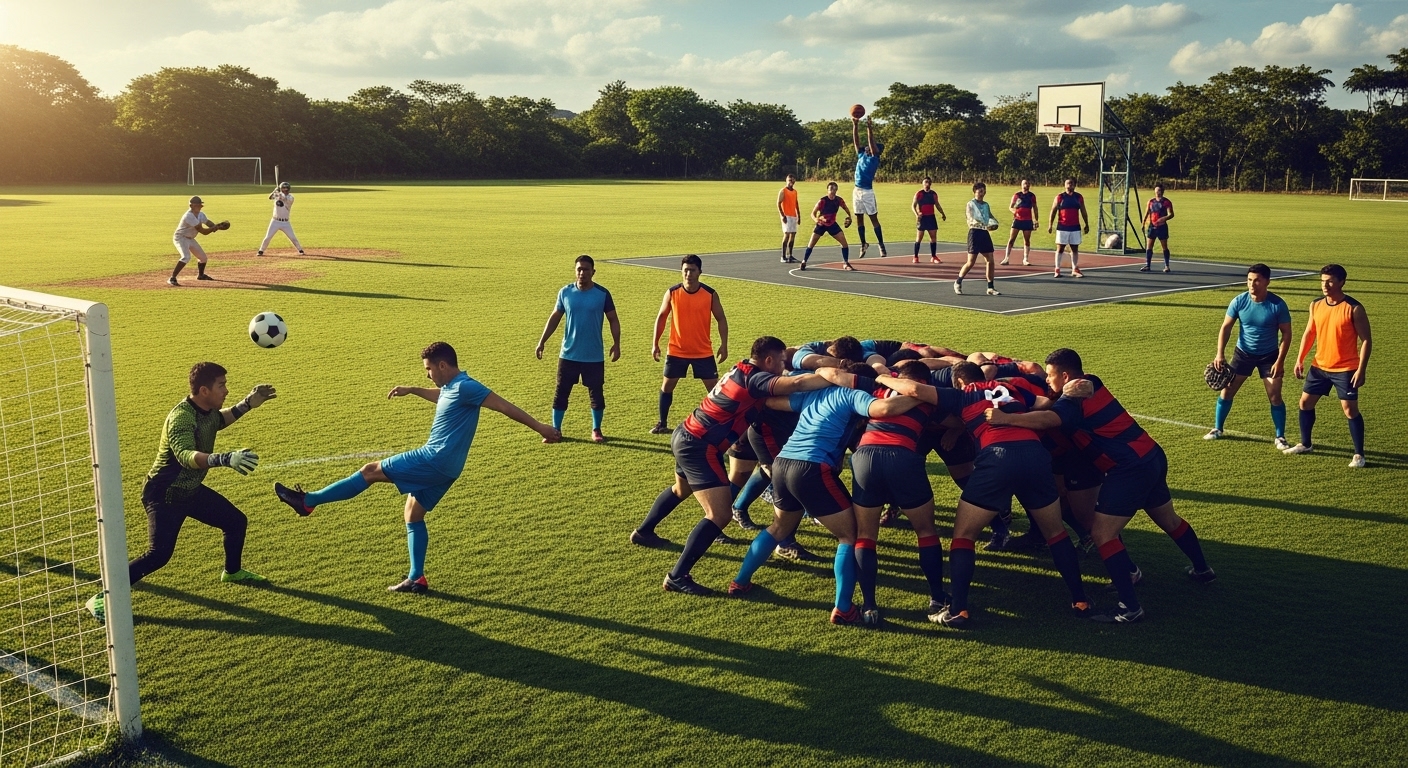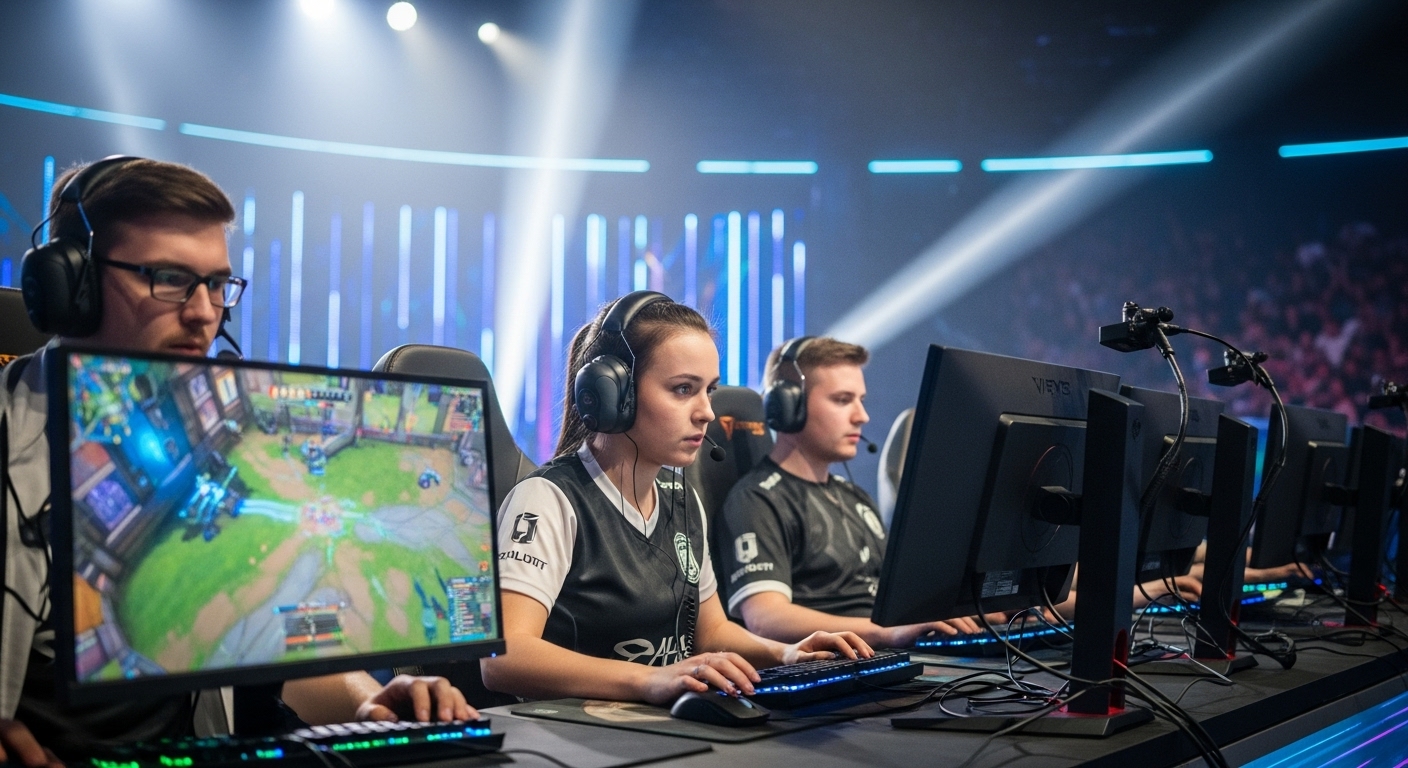Team sports have always held a special place in the world of athletics. Unlike individual sports that highlight the abilities of a single competitor, team sports emphasize collaboration, communication, and the ability to achieve a shared goal together. They are more than just games; they are experiences that unite people, build friendships, and create lifelong memories. Ranking the best team sports is not just about identifying which ones are the most popular, but also about considering their history, cultural impact, accessibility, and the way they bring people together across different parts of the world.
When you think about global popularity, soccer—known as football outside the United States—almost always takes the top spot. It is the world’s most watched and played sport, with billions of fans spanning every continent. What makes soccer so appealing is its simplicity. All you need is a ball and some open space, and suddenly you can have a game going. From the crowded streets of Brazil to the deserts of Africa and the schoolyards of Europe, soccer is everywhere. The FIFA World Cup is a cultural phenomenon, drawing unmatched television audiences and uniting countries in celebration or heartbreak. Soccer’s ability to transcend language and cultural barriers makes it the number one team sport in terms of influence and accessibility.
Basketball follows closely behind as another global powerhouse. Originating in the United States in the late nineteenth century, it quickly spread worldwide, becoming a cultural staple in countries such as the Philippines, China, Spain, and Argentina. The NBA, with its international superstars like Michael Jordan, Kobe Bryant, and LeBron James, has turned basketball into a global brand. The sport is fast-paced, exciting, and accessible in both indoor courts and outdoor street settings. What makes basketball particularly appealing is its combination of skill, speed, and teamwork. The chemistry between players on the court, the anticipation of a buzzer-beater, and the highlight-reel dunks keep fans engaged like few other sports.
Cricket is another team sport with an enormous following, especially in South Asia, the Caribbean, Australia, and England. To many, cricket is more than a game; it is a part of cultural identity. Matches in countries like India and Pakistan can bring entire nations to a standstill. While traditional test matches can last for days, the introduction of Twenty20 cricket has made the sport faster and more accessible to new audiences. Cricket’s unique mix of strategy, patience, and bursts of explosive action make it one of the most beloved team sports across the globe.
Baseball has a storied history, particularly in the United States, Japan, South Korea, and parts of Latin America such as the Dominican Republic and Cuba. Often referred to as America’s pastime, baseball represents tradition, community, and a slower pace of teamwork compared to faster sports. The game’s beauty lies in its strategy, the duel between pitcher and batter, and the way one swing of the bat can change everything. While it may not be as globally dominant as soccer or basketball, its deep roots and passionate fan bases make baseball one of the most cherished team sports worldwide.
Volleyball deserves recognition as well, not just for its popularity at the professional level, but also for how accessible it is recreationally. Played on beaches, in schools, and in professional leagues, volleyball is a sport that combines athleticism with strategy. The teamwork required is unique, as players must communicate seamlessly to set up spikes and defend against powerful serves. The rise of beach volleyball has also given the sport a new dimension, making it a staple at the Olympic Games and a favorite among casual players around the world.
Rugby is another team sport that commands enormous respect, especially in countries such as New Zealand, South Africa, England, and Australia. Rugby’s physicality and intensity are defining features, requiring not only strength but also courage, endurance, and tactical planning. Rugby has a unique culture of respect among players and fans, making it a sport that builds camaraderie both on and off the field. The Rugby World Cup is one of the largest sporting events globally, and iconic teams like the New Zealand All Blacks have become symbols of excellence in team sports.
Ice hockey, though more regionally concentrated, ranks highly due to its passionate following in countries like Canada, Russia, Sweden, Finland, and the United States. Known for its fast pace, physicality, and breathtaking skill, ice hockey is a sport where teamwork is absolutely essential. The coordination between lines, the speed of transitions, and the intensity of playoff hockey in the NHL are legendary. While it requires specific conditions and equipment, the communities that embrace hockey treat it as more than a sport—it becomes a way of life.
American football, particularly in the United States, is a cultural giant. The NFL dominates American sports, with the Super Bowl being one of the most-watched events in the world. American football requires immense strategy, specialization of roles, and teamwork. Each play is a carefully orchestrated collaboration between offensive and defensive units, showcasing not just physical power but also mental preparation. While it has not reached the same global reach as soccer or basketball, its impact in the United States makes it one of the most influential team sports ever.
Handball, though less globally famous, has a strong presence in Europe. Fast, exciting, and highly physical, handball combines elements of soccer and basketball, requiring sharp teamwork, speed, and precision. It is particularly popular in countries such as Denmark, France, and Germany, and is one of the fastest-growing sports in terms of international recognition.
Water polo, another Olympic staple, highlights endurance, strength, and teamwork in one of the toughest environments for athletes—the water. It may not have the same global reach as other sports on this list, but within aquatic communities and international competitions, it is highly respected for the athletic demands it places on players.
When ranking the best team sports, it is important to consider not only global popularity but also the cultural, social, and emotional value they bring to people’s lives. Soccer stands out as the undisputed leader in terms of worldwide following and accessibility. Basketball, cricket, and baseball each carry their own weight as cultural cornerstones with immense fan bases. Volleyball, rugby, and ice hockey provide thrilling alternatives that highlight different aspects of teamwork, from finesse and agility to power and endurance. American football, while more regionally dominant, remains one of the most impactful sports culturally, especially in the United States.
Ultimately, the best team sport depends on perspective. For someone in Brazil, soccer may feel like life itself. For a fan in the United States, nothing may compare to the excitement of the Super Bowl. A child in the Philippines may dream of playing in the NBA, while a young athlete in India idolizes cricket legends. What unites all of these sports, however, is their ability to bring people together, create shared memories, and inspire the next generation. Team sports are more than games; they are global languages of connection, resilience, and joy.


